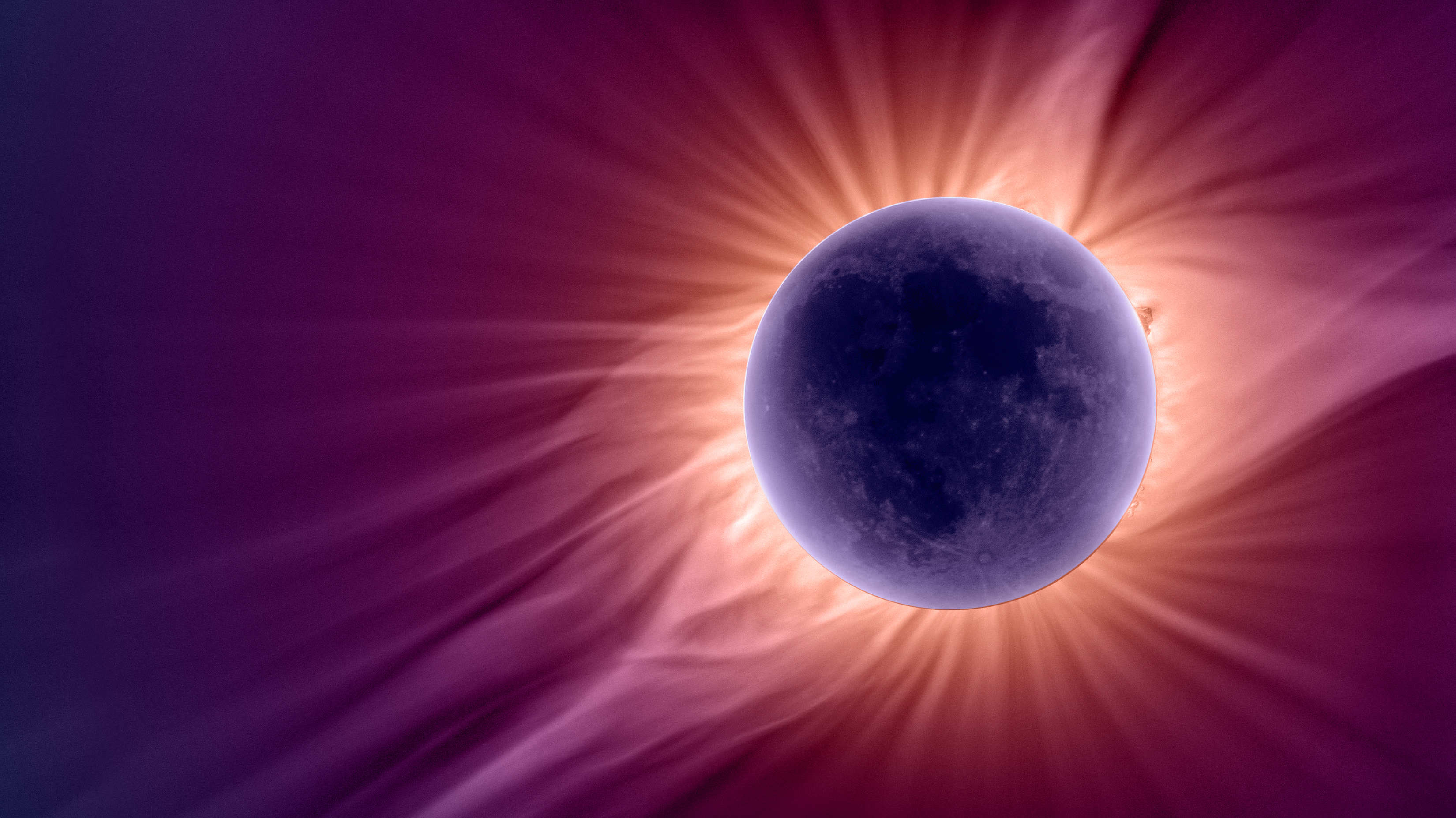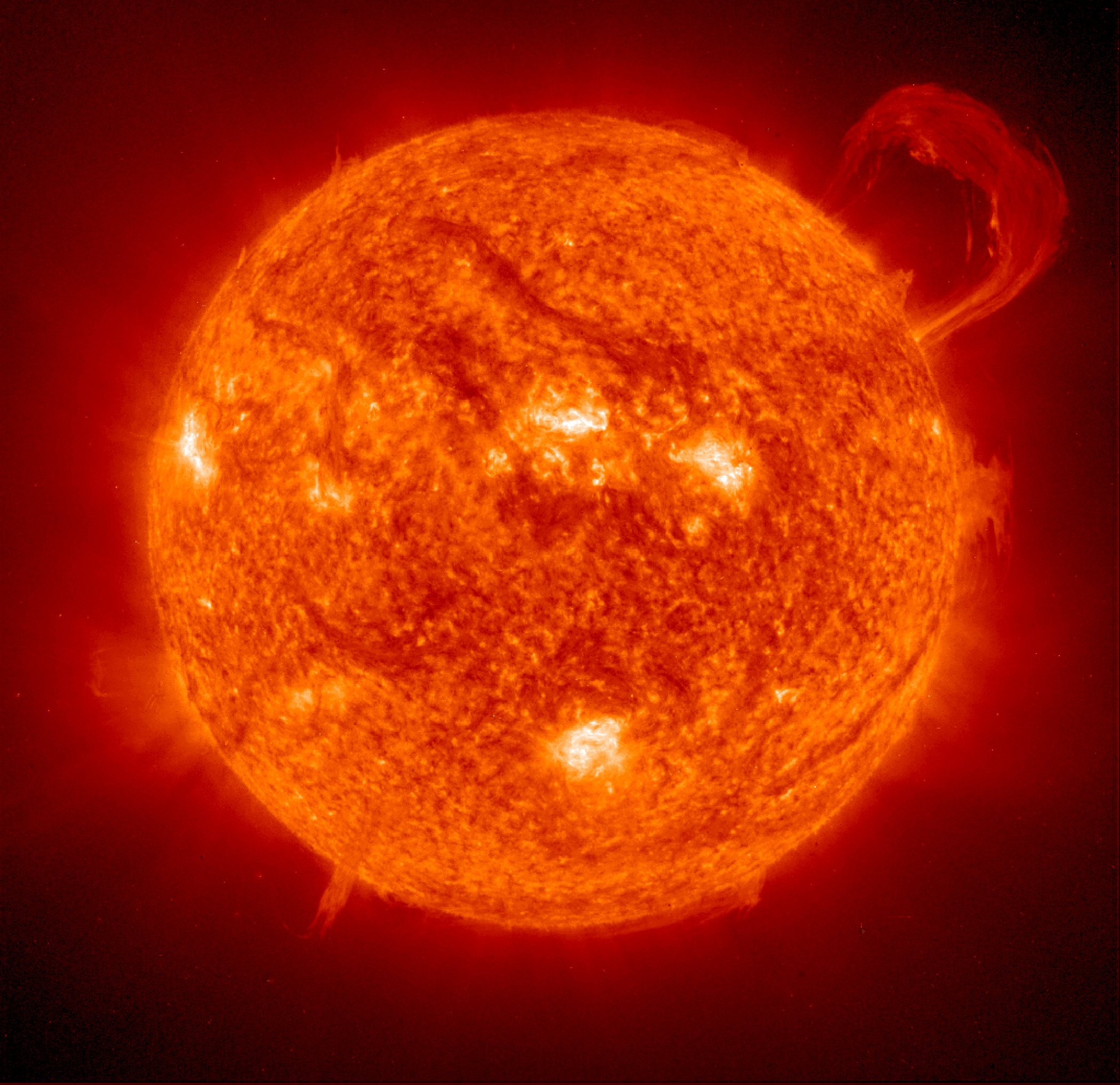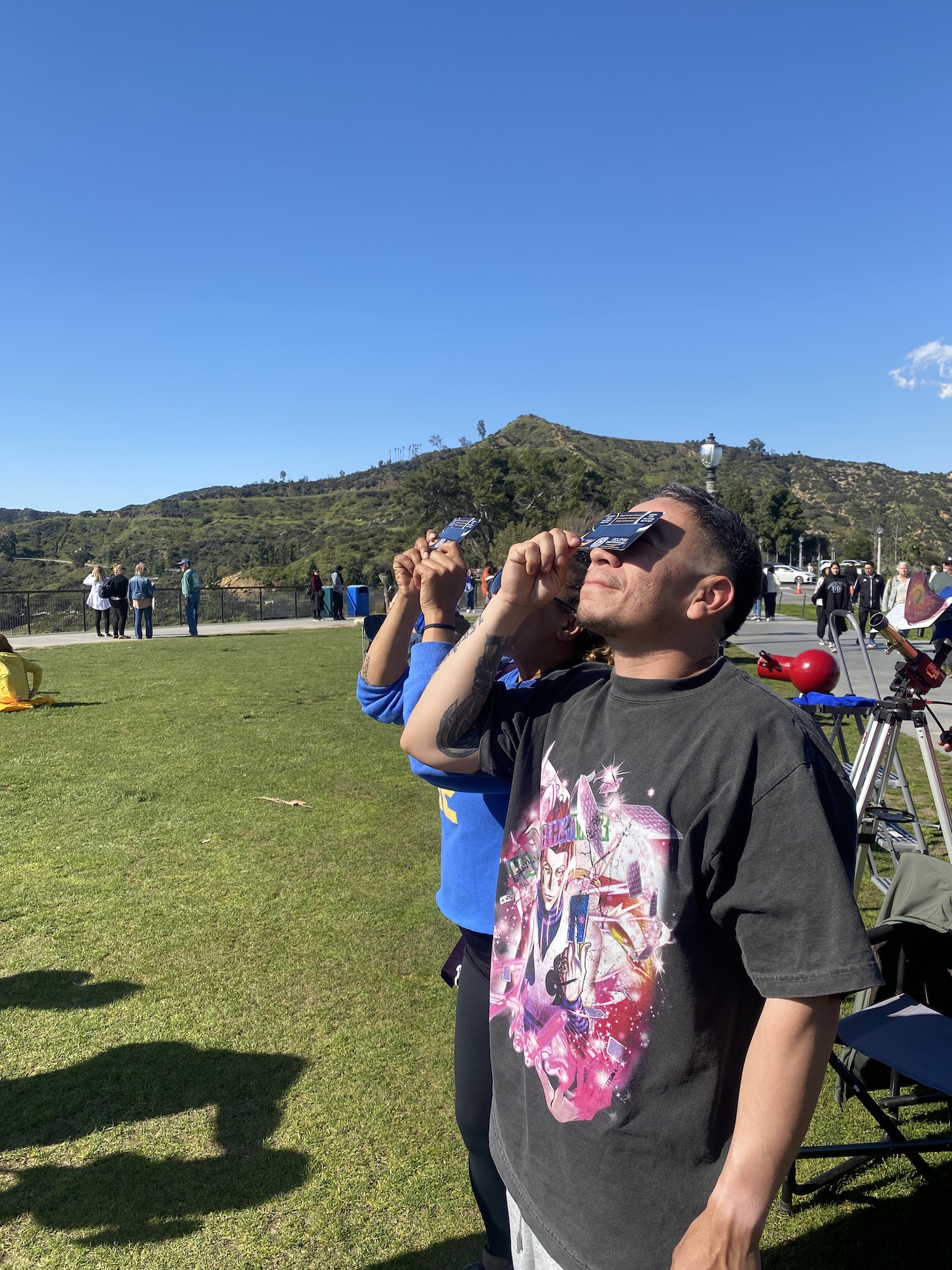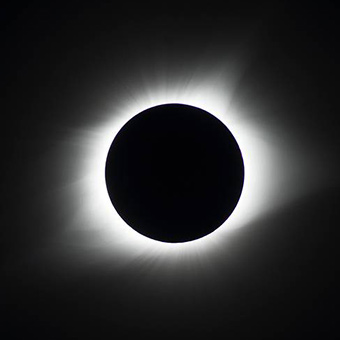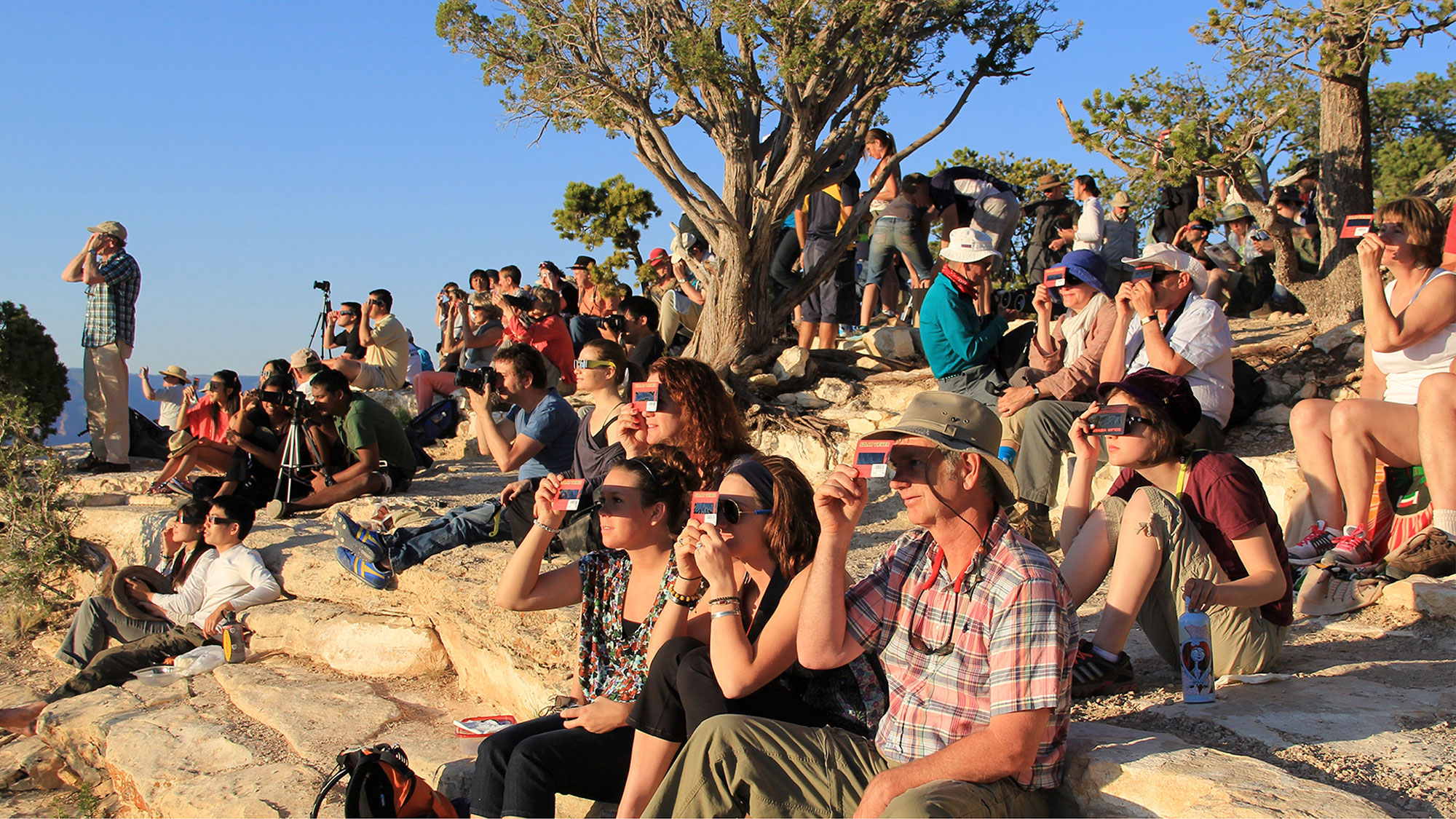For press and media requests about eclipses, please contact:
2024 Total Solar Eclipse
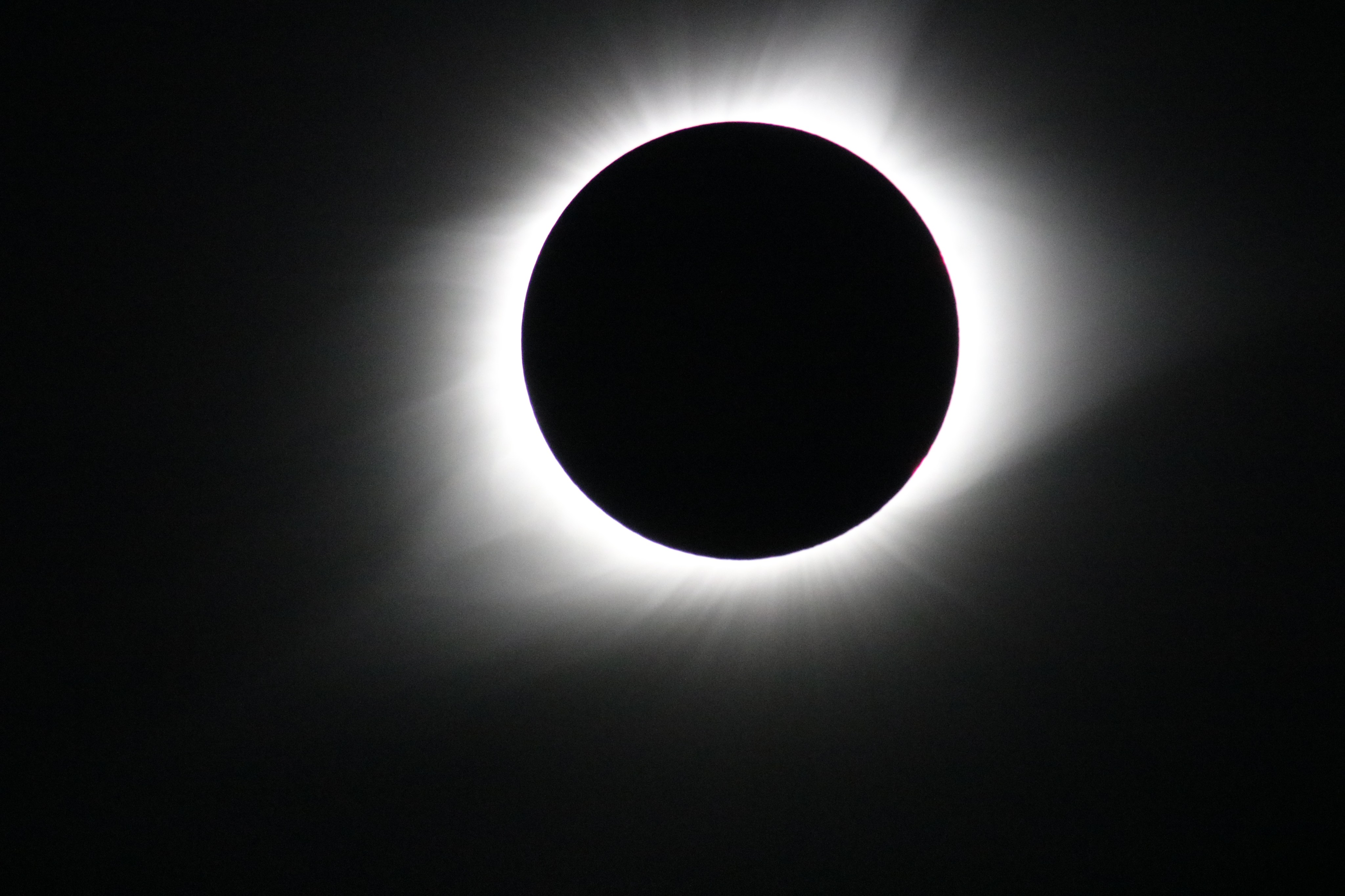
The April 8, 2024, eclipse was a total solar eclipse. It was be the last total solar eclipse visible from the contiguous United States until 2044. A total solar eclipse happens when the Moon passes between the Sun and Earth, completely blocking the face of the Sun. People viewing the eclipse from locations where the Moon’s shadow completely covers the Sun — known as the path of totality —experienced a total solar eclipse. The sky darkened, as if it were dawn or dusk. Weather permitting, people along the path of totality saw the Sun’s corona, or outer atmosphere, which is usually obscured by the bright face of the Sun.
For NASA, this eclipse provides a unique opportunity to study the Sun and Earth. Through volunteering in citizen science projects, people all over North, Central, and South America participated in scientific research during this eclipse.
Resources
- 2024 Total Solar Eclipse
- Information about the 2024 total eclipse, including where and when the eclipse was, how to prepare, activities, and images.
- go.nasa.gov/Eclipse2024
- Total Solar Eclipse Safety
- Safety information about the eclipse, including eye safety and resources for other hazards.
- https://science.nasa.gov/eclipses/future-eclipses/eclipse-2024/safety/
- General Solar Eclipse
- General information about eclipses, including other upcoming eclipses, citizen science, and scientific information.
- https://science.nasa.gov/eclipses/
- NASA HEAT
- NASA Heliophysics Education Activation Team (NASA HEAT) provides resources and methods for informal and formal educators to incorporate heliophysics and eclipse content into their work.
- https://solarsystem.nasa.gov/heat/
- Eclipse Ambassadors – Off the Path Engagement
- Undergraduate students and amateur astronomers engaged their local communities, providing solar viewing glasses as well as context for underserved communities off the central paths.
- https://astrosociety.org/education-outreach/amateur-astronomers/eclipse-ambassadors/program.html
Multimedia
- Multimedia Resource Gallery
- Downloadable animations, images, B-roll, produced videos, and other resources about the total solar eclipse, viewing safety, and heliophysics.
- https://svs.gsfc.nasa.gov/gallery/2024total-solar-eclipse-gallery/
- Snapchat
- Instagram:
Media Events
Media Briefing: American Meteorological Society Annual Meeting
Video credit: NASA’s Goddard Space Flight Center
Producers: Beth Anthony (eMITS | MORI Associates), Lacey Young (eMITS | MORI Associates), Joy Ng (National Institute of Aerospace)
Panelists:
- Dr. Kelly Korreck, Program Manager for the 2024 Eclipse, NASA Headquarters
- Dr. Alex Lockwood, Strategic Content and Integration Lead, Science Mission Directorate, NASA Headquarters
- Dr. Jamie Favors, Director, NASA Space Weather Program, NASA Headquarters
This video can be freely shared and downloaded at https://svs.gsfc.nasa.gov/14519.
NASA's 2024 Eclipse Map
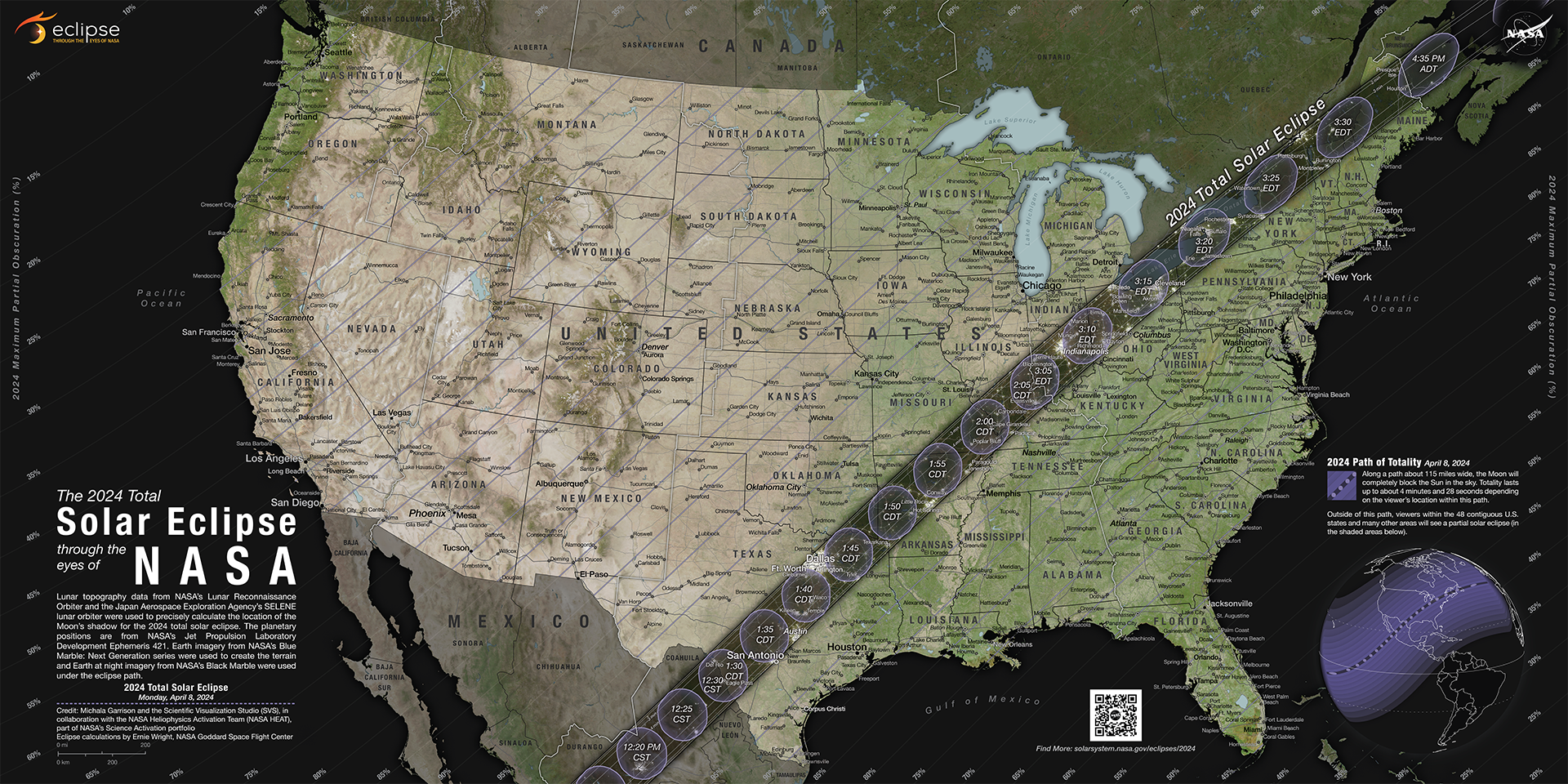
- Downloadable version from NASA's Scientific Visualization Studio.
- Learn more about how to read and use NASA’s eclipse maps.
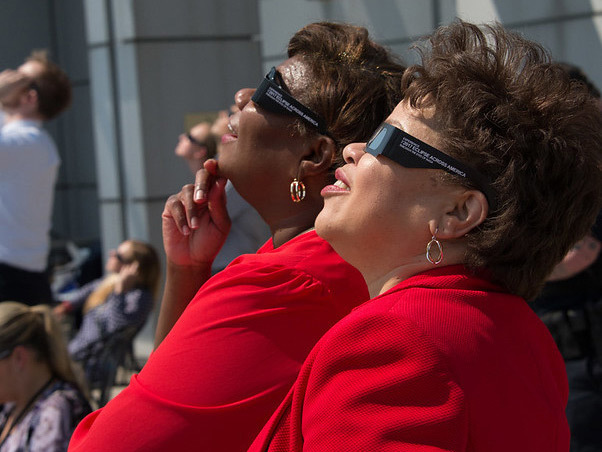
Eye Safety
Except during the brief total phase of a total solar eclipse, when the Moon completely blocks the Sun’s bright face, it is not safe to look directly at the Sun without specialized eye protection for solar viewing. Safe solar viewing glasses, or “eclipse glasses”, are not regular sunglasses.
Viewing any part of the bright Sun through a camera lens, binoculars, or a telescope without a special-purpose solar filter secured over the front of the optics will instantly cause severe eye injury.
For more information, visit: go.nasa.gov/EclipseSafety
Skin Safety
Even during the partial phases of a total solar eclipse, the Sun will be very bright. If you are watching an entire eclipse, you may be in direct sunlight for hours. Remember to wear sunscreen, a hat, and protective clothing to prevent skin damage.
Find more Tips to Stay Safe in the Sun from the U.S. Food and Drug Administration.
Travel Safety
With so many people traveling, please check local and national advisories well ahead of time. Travelers planning to see the eclipse should plan well in advance. They should anticipate heavy traffic and crowded locations. It is best to book lodging as soon as possible and to prepare to have difficulties driving on the day of the eclipse. Travelers should make sure to bring food and water and determine how to access a bathroom if they need wait out the traffic when they leave.
In addition to inspiring artists and musicians, eclipses have driven numerous scientific discoveries. For over a century, solar eclipses have helped scientists decipher the Sun’s structure and explosive events, find evidence for the theory of general relativity, and discover a new element, among other things.
Learn more about how NASA scientists have used eclipses for research here: https://science.nasa.gov/eclipses/nasa-research/
During the total eclipse in 2024, NASA is funding several research initiatives. Three of those initiatives also happened during the annular solar eclipse in October. In addition to those projects, three sounding rockets will be launched during the total solar eclipse.
You can get involved with NASA science by participating in a number of NASA-funded citizen science projects. Citizen science projects are collaborations between scientists and interested members of the public. Through these collaborations, volunteers (known as citizen scientists) have helped make thousands of important scientific discoveries. Explore citizen science projects here.

